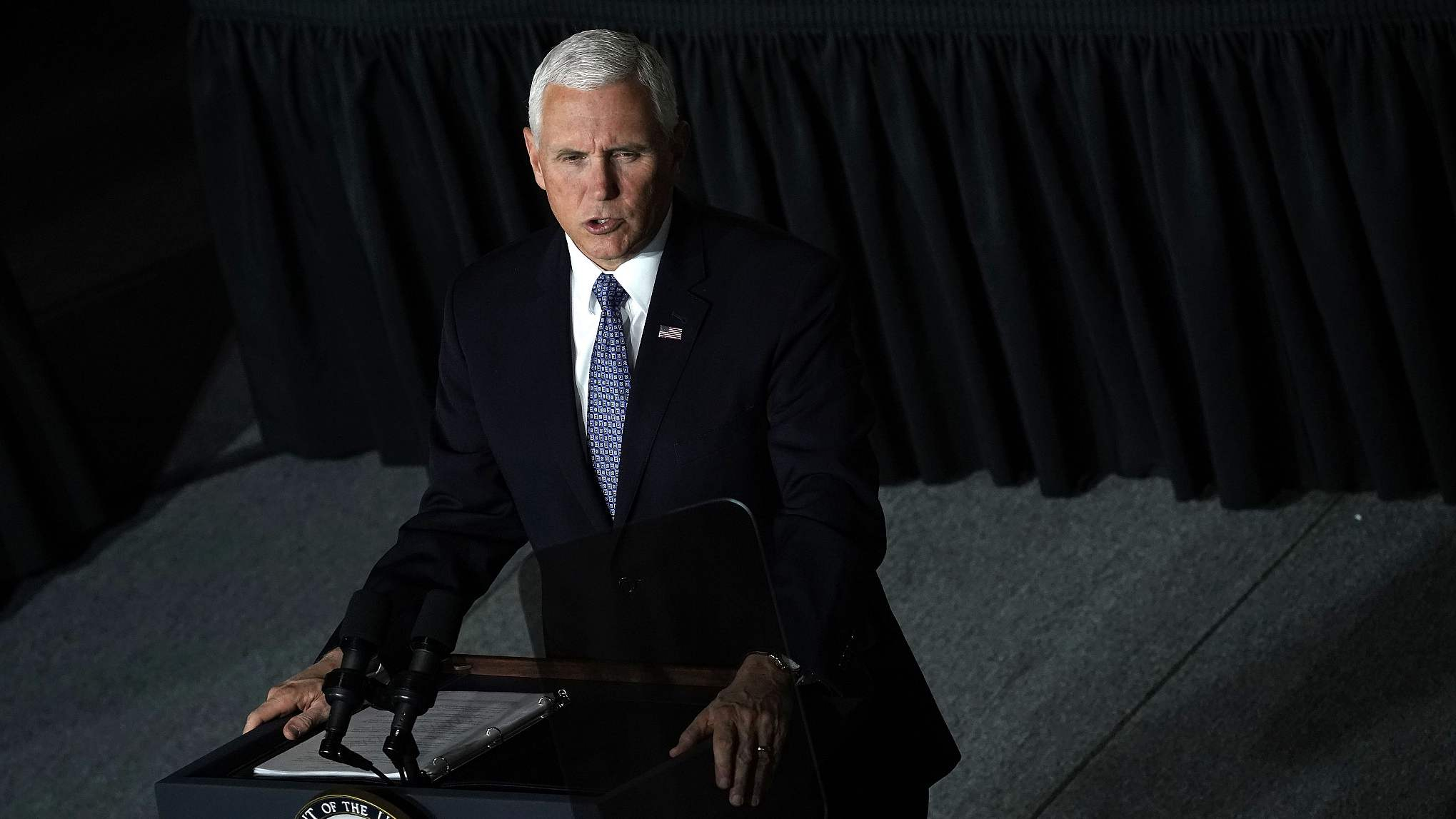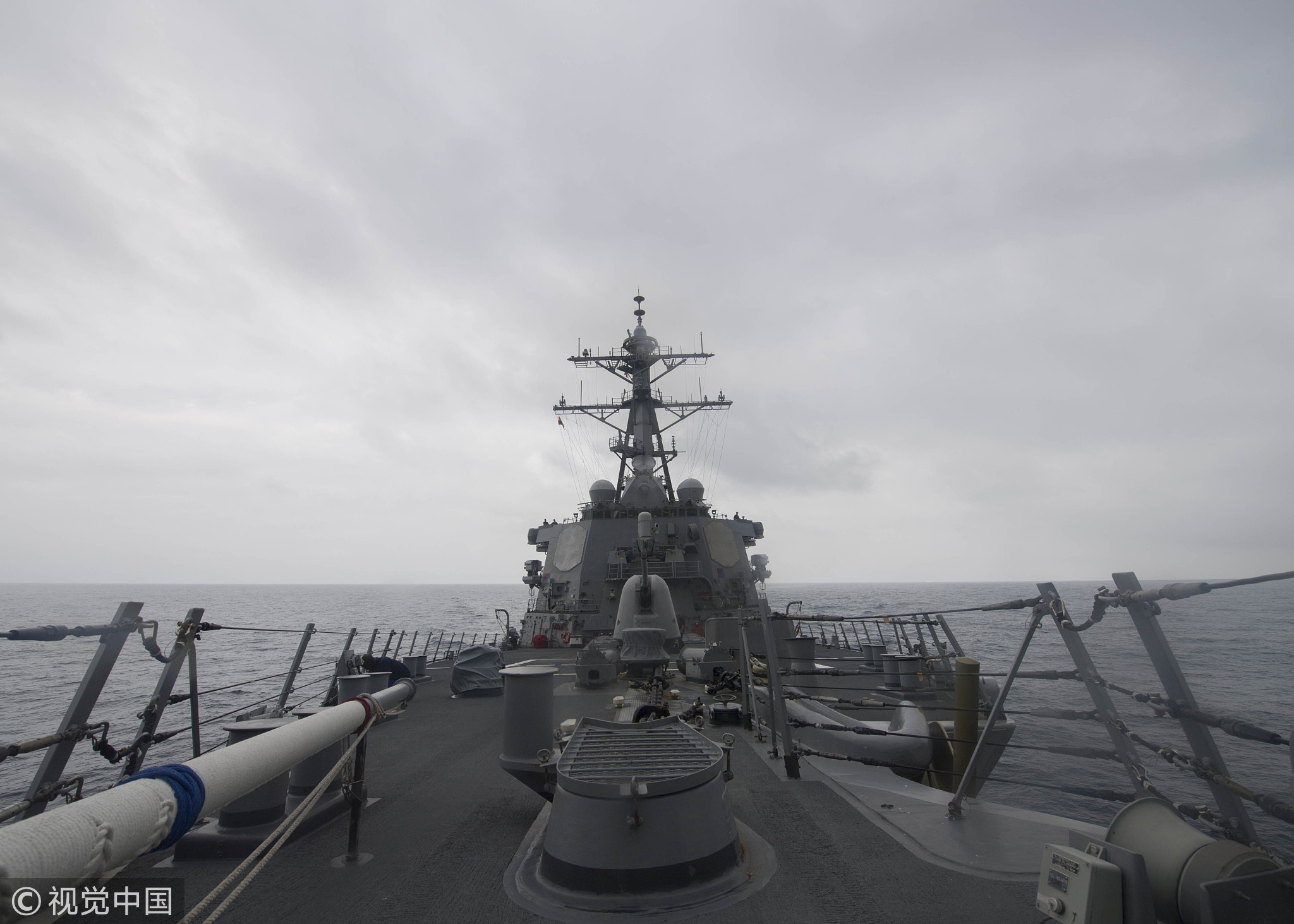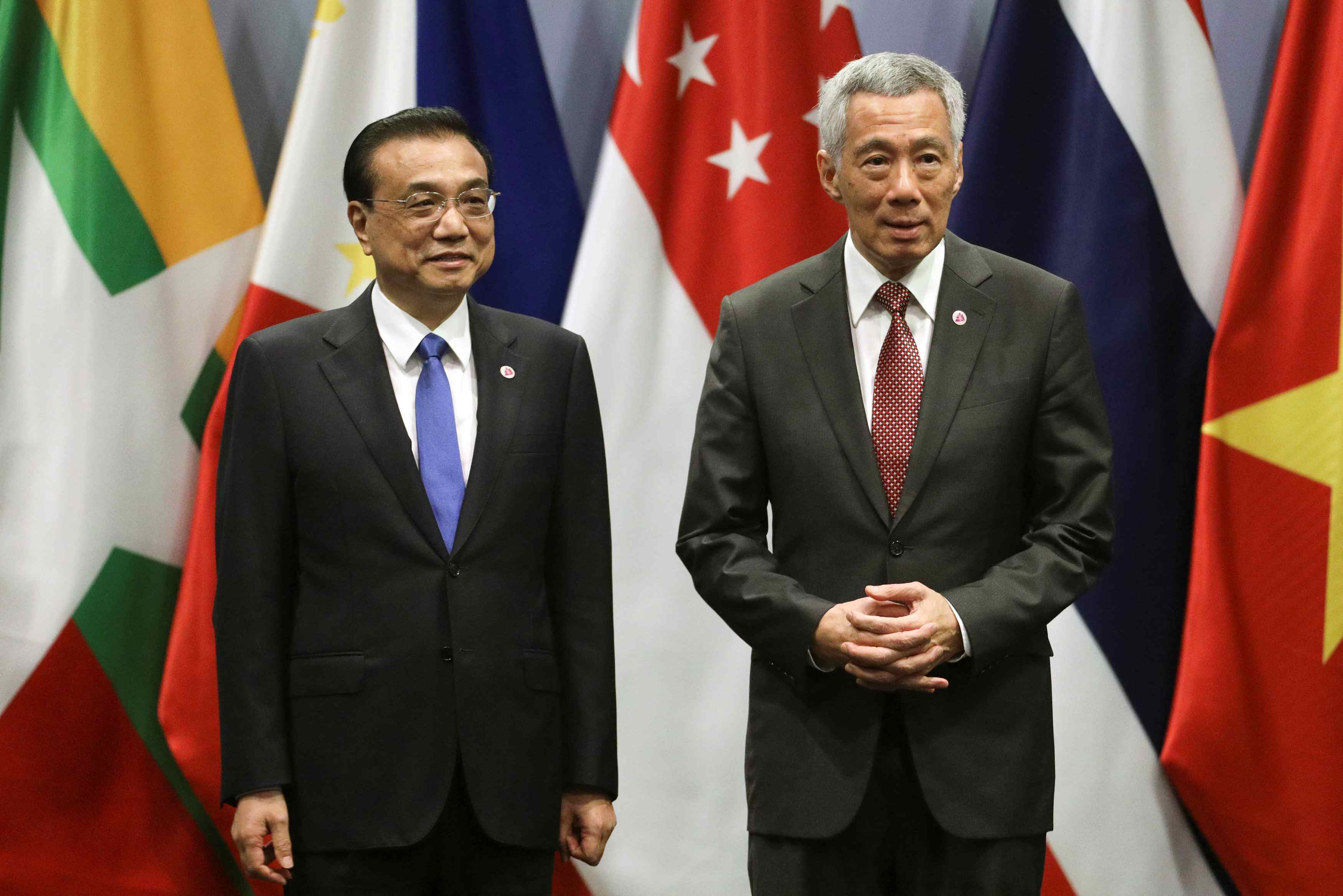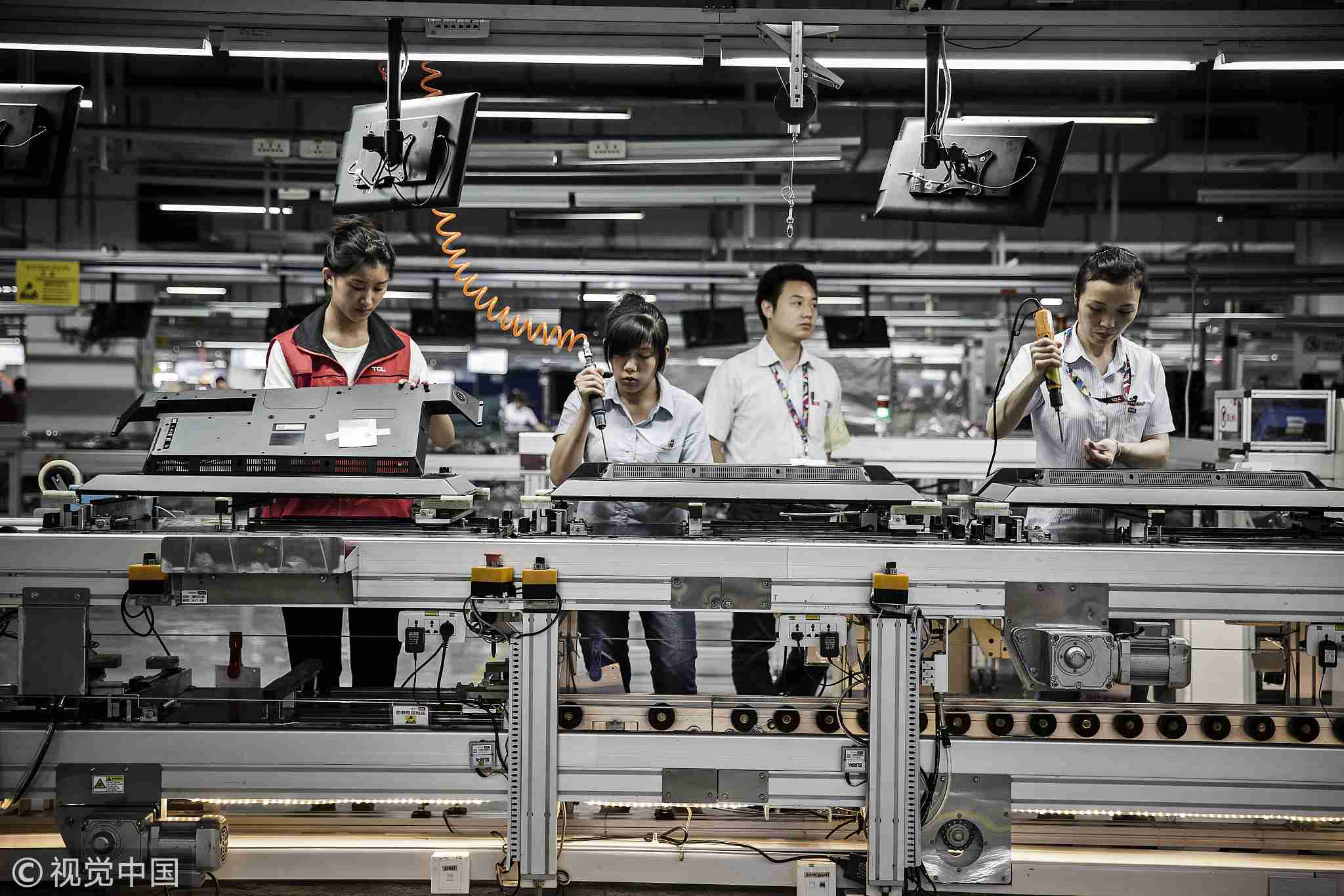
Opinions
11:01, 17-Nov-2018
Opinion: Pence's Cold War warning is an empty threat
Updated
10:44, 20-Nov-2018
Ken Moak

Editor's note: Ken Moak taught economic theory, public policy and globalization at the university level for 33 years. He co-authored a book titled "China's Economic Rise and Its Global Impact" in 2015. The article reflects the author's opinion, and not necessarily the views of CGTN.
It was reported in an interview with The Washington Post that US Vice President Mike Pence threatened an all-out Cold War against China if the latter does not meet all Trump's demands, including dismantling missiles on islands in the South China Sea, giving up the “Make in China 2025” industrial policy, not forcing technology transfer to Chinese partners, etc. The US, in effect, is demanding China to behave the way America wants: Be a subservient vassal state like the other allies.
Reuters News, citing three unnamed government sources, reported on November 15 that China had sent a written response, perhaps fueling the speculation that it might have “blinked” or concede to some US demands. But given China's tit-for-tat tariffs and countering US naval “freedom of navigation operations” in the South China Sea, it is hard to believe that China is surrendering its sovereignty.

File Photo: The Arleigh Burke-class guided-missile destroyer USS John S. McCain (DDG 56) patrols the South China Sea on January 7, 2017. /VCG Photo
File Photo: The Arleigh Burke-class guided-missile destroyer USS John S. McCain (DDG 56) patrols the South China Sea on January 7, 2017. /VCG Photo
The opposite, in fact, might be true. The trade war has not hurt China the way the US boasted. China it still growing at 6.7 percent in the first three quarters, much higher than the US with just over three percent for the same period. Foreign direct investment into China increased 3.3 percent in the first ten months year-on-year. Whereas in the US, the trade war seemed to have scared foreign and domestic investors away, both inbound foreign direct and domestic investments went into negative territory in the same period.
China seems to have more “friends” than the US in the Asia Pacific. Chinese Premier Li Keqiang's five-day visit to Singapore managed to secure two trade-promotion agreements: 1) The China-ASEAN Strategic Partnership Vision 2030 under which the two sides would promote globalism and reject protectionism; and 2) The China-ASEAN FTA Protocol Upgrade, sending a message that the two sides will increase trade and investment.

Chinese Premier Li Keqiang (L) and Singapore's Prime Minister Lee Hsien Loong
attend the ASEAN Plus Three (APT) Summit in Singapore, November 15, 2018. /Reuters Photo
Chinese Premier Li Keqiang (L) and Singapore's Prime Minister Lee Hsien Loong attend the ASEAN Plus Three (APT) Summit in Singapore, November 15, 2018. /Reuters Photo
Additionally, China and the ASEAN have also made progress in realizing a Code of Conduct (COC) in the South China Sea to deal with territorial claim and resource exploitation issues. A formal COC is to be signed between the two sides within three years. The 16-nation Regional Comprehensive Economic Partnership (RCEP) excludes the US, but includes the ASEAN, Australia, China, India, Japan, S. Korea, Russia and others was within striking distance but ditched by India at the last minute. However, the RCEP agreement could be signed next year once the India's concern for its domestic industries are addressed.
The four results are an indication that the Asia Pacific countries want to increase trade and investment with China and promote peace in the region. They don't have the appetite to oppose China as the US wants them to.
Further, China might not be as strong as the US is, economically or militarily, but China does have the muscles to incur “unacceptable” human and property losses in the war that the US might not win, according to a recent report issued by the US National Defense Strategy Commission.
While the authors might fan the scaremongering report to increase additional defense funding, their assessment might not be too far off, given China's recent weapons development and production accomplishments. In any event, China is prepared to defend its “core interests” militarily.
What can the US-China Cold War do to China, short of a “hot war”?
Short of actual combat, there is really not very much the US can do to China for a number of reasons.
1) A US-China Cold War would mean the US imposes tariffs on all Chinese imports. Should this materialize, the US economy would take a big hit because as indicated earlier, most of the goods are “Made by the US” but in China. The tariffs would increase taxes on these goods, triggering inflation pressure, eroding profitability and investment. Slower economic growth would reduce tax revenues, raising the country's debt burden.

Workers assemble monitors at a TCL Corp. factory in Huizhou, Guangdong province, April 18, 2016. /VCG Photo
Workers assemble monitors at a TCL Corp. factory in Huizhou, Guangdong province, April 18, 2016. /VCG Photo
2) A rising debt burden would promise to increase the US' public debt, already nearing 100 percent of GDP, further. This would preclude any opportunity of mounting additional huge spending on national defense, particularly when the US infrastructures require urgent repair/upgrade. The huge defense spending also caused underfunding in education, healthcare and poverty reduction services.
3) US allies seem to be alienated by US foreign policies, demanding NATO members increase defense spending and fighting US wars. French President Emmanuel Macron's proposal of forming a European army to defend Europe against Russia, China and possibly the US might be an indication that Europe is seeking an independent foreign policy. There is no reason for the Europeans to fight China, particularly when they want to increase trade with and investment from the Asian power.
Japan and India are seeking rapprochement with China. Even staunch ally Australia is aware that fighting China might not be a good idea. China is their biggest trade partner after all. More important perhaps, a China-US “hot” war would be fought on their soils, potentially killing millions of their citizens and destroying unthinkable amount of properties.
4) Senior officials within the Trump Administration are not unanimous on the Cold War posture. Treasury Secretary Steven Mnuchin, Commerce Secretary Wilbur Ross and chief economist Larry Kudlow prefer dialogue or negotiate a settlement with China. Vice President Mike Pence, Trade Representative Robert Lighthizer, National Security Adviser John Bolton and Chief trade Adviser Peter Navarro take a more “hawkish” stand.
5) The American public would not tolerate a “hot” war against China, particularly one that is based on “fake news”. The government had used that strategy before and ended up losing thousands of human lives and properties. Fighting China would incur far more cost than the Vietnam and Iraq Wars combined. It was the 50,000 dead American soldiers that rallied loud public protests against President Lyndon Johnson that ended the Vietnam War and his loss of a second term.
Pence's threat of mounting an all-out Cold War against China rings hallow. The Trump administration cannot do it without suffering huge economic and political costs to itself.
(Cover Photo: US Vice President Mike Pence speaks during the fourth meeting of the National Space Council at National Defense University at Fort McNair October 23, 2018 in Washington, DC. )
(If you want to contribute and have specific expertise, please contact us at opinions@cgtn.com)

SITEMAP
Copyright © 2018 CGTN. Beijing ICP prepared NO.16065310-3
Copyright © 2018 CGTN. Beijing ICP prepared NO.16065310-3